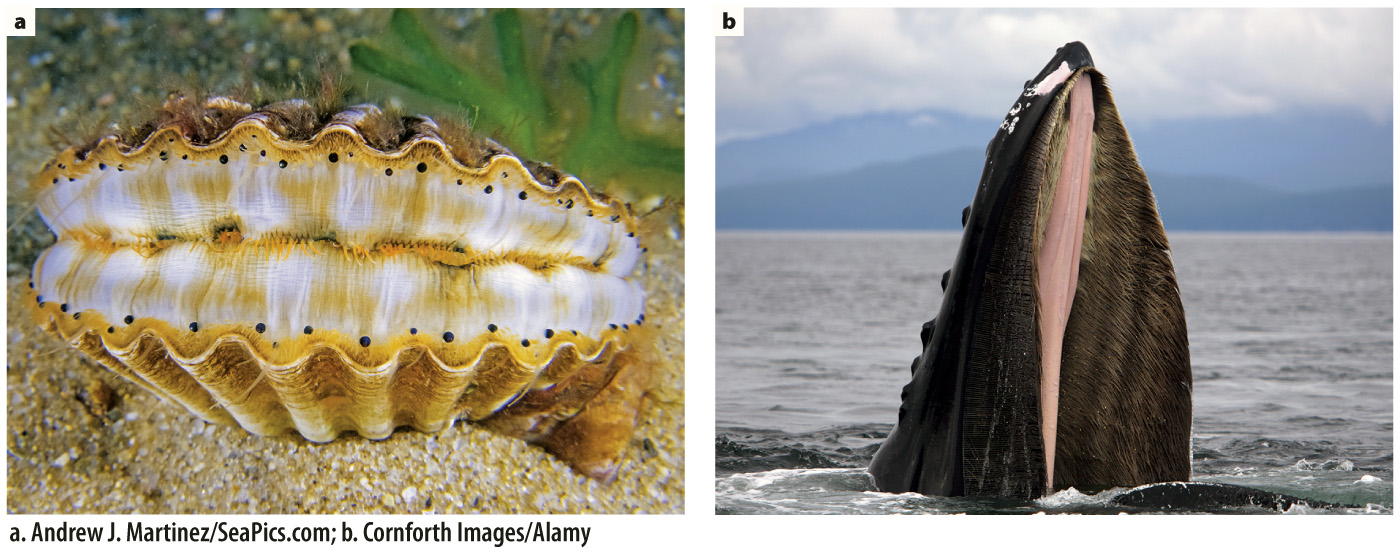Suspension filter feeding is common in many aquatic animals.
The most common form of food capture by animals is suspension filter feeding, in which water with food suspended in it is passed through a sievelike structure (Fig. 40.7). Suspension filter feeding is possible only in aquatic environments, where it is common in a great diversity of animals found in oceans and freshwater bodies. This form of feeding evolved multiple times independently on many different branches of the tree of life, and so these occurrences of filter feeding are examples of convergent evolution (Chapter 23).

Many worms and bivalve mollusks, such as scallops, clams, and oysters, pump water over their gills to trap food particles suspended in the water (Fig. 40.7a). Cells of the gills produce mucus that acts as an adhesive to trap food particles, and the cells’ beating cilia sweep food trapped in the mucus to the mouth and gut.
Other aquatic organisms move water with food particles suspended in it through filters in their oral cavity to separate the food from the water, and then convey the food into the gut. Large baleen whales have long comblike blades of baleen (which is made of keratin, the same material that makes up hair) in their mouth to capture small shrimp called krill that are plentiful in ocean waters (Fig. 40.7b).